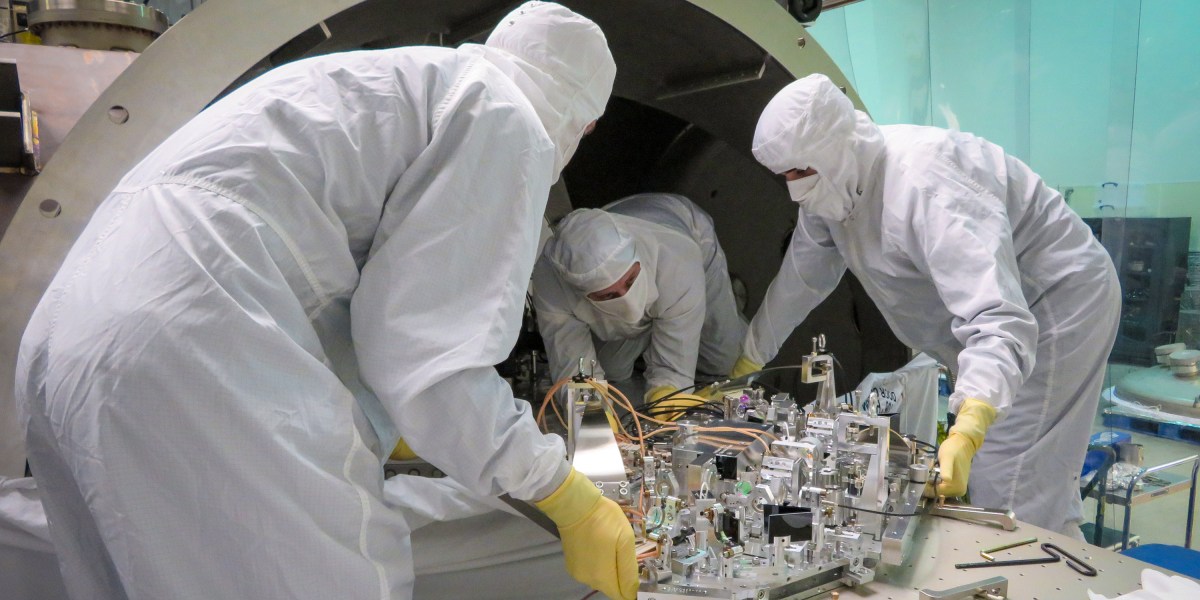LIGO has confirmed 90 gravitational wave detections so far, but physicists want to detect more, which will require making the experiment even more sensitive. And that is a challenge.
“The struggle of these detectors is that every time you try to improve them, you actually can make things worse, because they are so sensitive,” says Lisa Barsotti, a physicist at the Massachusetts Institute of Technology.
Nevertheless, Barsotti and her colleagues recently pushed past this challenge, creating a device that will allow LIGO’s detectors to detect far more black hole mergers and neutron star collisions. The device belongs to a growing class of instruments that use quantum squeezing—a practical way for researchers dealing with systems that operate by the fuzzy rules of quantum mechanics to manipulate those phenomena to their advantage.
Physicists describe objects in the quantum realm in terms of probabilities—for example, an electron is not located here or there but has some likelihood of being in each place, locking into one only when its properties are measured. Quantum squeezing can manipulate the probabilities, and researchers are increasingly using it to exert more control over the act of measurement, dramatically improving the precision of quantum sensors like the LIGO experiment.
“In precision sensing applications where you want to detect super-small signals, quantum squeezing can be a pretty big win,” says Mark Kasevich, a physicist at Stanford University who applies quantum squeezing to make more precise magnetometers, gyroscopes, and clocks with potential applications for navigation. Creators of commercial and military technology have begun dabbling in the technique as well: the Canadian startup Xanadu uses it in its quantum computers, and last fall, DARPA announced Inspired, a program for developing quantum squeezing technology on a chip. Let’s take a look at two applications where quantum squeezing is already being used to push the limits of quantum systems.
Taking control of uncertainty
The key concept behind quantum squeezing is the phenomenon known as Heisenberg’s uncertainty principle. In a quantum-mechanical system, this principle puts a fundamental limit on how precisely you can measure an object’s properties. No matter how good your measurement devices are, they will suffer a fundamental level of imprecision that is part of nature itself. In practice, that means there’s a trade-off. If you want to track a particle’s speed precisely, for example, then you must sacrifice precision in knowing its location, and vice versa. “Physics imposes limits on experiments, and especially on precision measurement,” says John Robinson, a physicist at the quantum computing startup QuEra.
By “squeezing” uncertainty into properties they aren’t measuring, however, physicists can gain precision in the property they want to measure. Theorists proposed using squeezing in measurement as early as the 1980s. Since then, experimental physicists have been developing the ideas; over the last decade and a half, the results have matured from sprawling tabletop prototypes to practical devices. Now the big question is what applications will benefit. “We’re just understanding what the technology might be,” says Kasevich. “Then hopefully our imagination will grow to help us find what it’s really going to be good for.”

